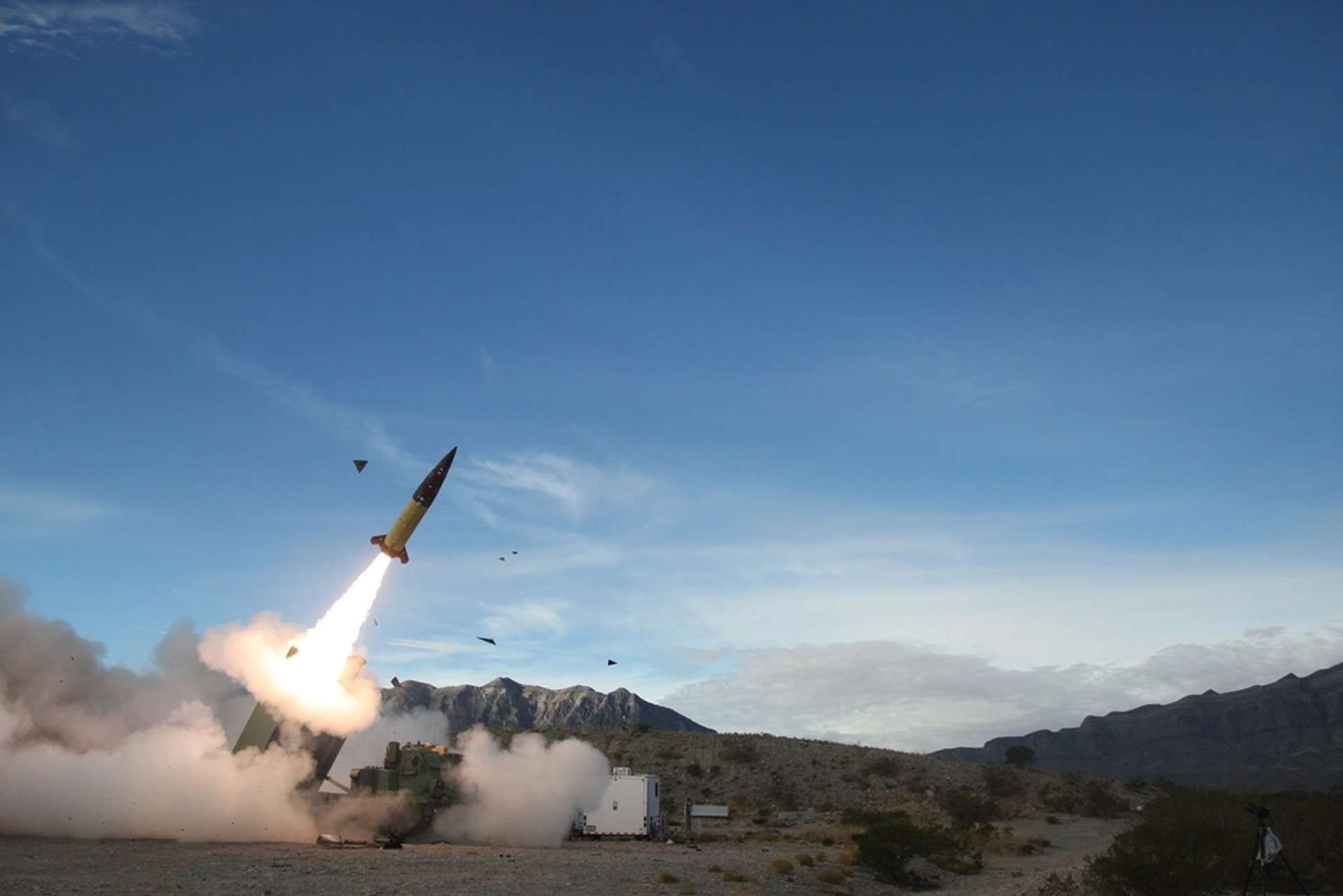Breaking news
Ukraine attacks Russian oil depot with US-made ATACMS ballistic missile.
A recent report by the Kyiv Post on May 11, 2024, suggests that Ukraine used a US-made MGM-140 Army Tactical Missile System (ATACMS) tactical ballistic missile to target a Russian oil depot in the city of Rovenky, located in the occupied Luhansk region. This strike, occurring late in the evening on May 10, appears to be part of Ukraine’s continued campaign against Russian oil infrastructure, a focus since 2023.
Follow Army Recognition on Google News at this link

Ukraine seems to have used a US-made MGM-140 Army Tactical Missile System (ATACMS) tactical ballistic missile to target a Russian oil depot in the city of Rovenky, located in the occupied Luhansk region. (Picture source: Twitter/Mario Nawfal and Lockheed Martin)
The targeted facility in Rovenky, approximately 115 kilometers east of the front lines and 60 kilometers south of Luhansk, experienced multiple explosions. Preliminary reports and videos from social media channels in the area indicate the potential use of at least one ATACMS tactical ballistic missile equipped with cluster munitions in the attack, which offers several advantages when striking targets like oil depots. Primarily, the ATACMS is a long-range missile capable of delivering a substantial payload over considerable distances, effectively reaching deep into enemy territory, which is particularly advantageous when direct engagement is risky or undesirable.
In early 2024, the United States supplied Ukraine with several ATACMS tactical ballistic missiles as part of a larger military assistance package valued at around $300 million. This action aimed to strengthen Ukraine's capacity to engage strategic sites deep within adversary territory, thereby augmenting their tactical capabilities on the battlefield. The delivery, comprising a total of 20 ATACMS missiles, was conducted discreetly due to concerns over potential Russian interference during transit. The decision to furnish these missiles followed extensive deliberations and formed part of an initiative to equip Ukraine with the means to effectively retaliate against Russian forces, particularly targeting logistical and command installations critical to Russian military operations.
The ATACMS itself represents a highly proficient tactical missile system notably known for its accuracy and extensive range. With the ability to engage targets at distances of nearly 300 kilometers, it serves as an effective tool for striking enemy positions well beyond frontline zones, while offering compatibility with both the M270 Multiple Launch Rocket System (MLRS) and the M142 High Mobility Artillery Rocket System (HIMARS) supplied to Ukraine. Notably, the ATACMS is particularly useful for targeting dispersed or broad-area objectives such as military installations or infrastructure, owing to its capability to deploy either unitary or cluster munitions warheads.
When equipped with cluster munitions, the ATACMS becomes especially effective against area targets such as oil depots. Cluster munitions are designed to disperse over a wide area, increasing the likelihood of hitting the intended target even if it is spread out or has multiple components, such as storage tanks in an oil depot. This dispersal mechanism ensures extensive damage to the facility, potentially crippling the logistical and operational capabilities of the adversary.

When equipped with cluster munitions, the ATACMS becomes especially effective against area targets such as oil depots, potentially crippling the logistical and operational capabilities of the adversary. (Picture source: US DoD)
Furthermore, the use of ATACMS from mobile launchers like the M270 Multiple Launch Rocket System (MLRS) and the M142 High Mobility Artillery Rocket System (HIMARS) enhances its effectiveness, as these launch systems can rapidly deploy the missile and relocate, reducing the risk of counterattacks. This capability has a substantial impact on the operational capabilities of the enemy, as demonstrated by Ukraine's broader series of attacks on Russian oil facilities.
Over the past year, Ukraine has escalated its military efforts, targeting oil refineries and depots across Russia, including locations such as Bryansk, Klintsy, Nizhny Novgorod, and Oryol. These strikes, predominantly executed using drones and missiles, aim to disrupt Russia’s oil processing capabilities, crucial for its military logistics and economic stability. Damage from these strikes has led to operational disruptions and shutdowns at several facilities, affecting approximately 11% of Russia’s total oil refinery capacity.
The strategic intent behind these attacks extends beyond operational disruption; they aim to inflict economic damage and expose vulnerabilities in Russia's air defense, thereby exerting psychological and moral pressure on its military resources. At the same time, Russia finds itself compelled to redeploy air defense systems from the front lines in Ukraine to protect these vital infrastructures that support its heavily mechanized, fuel-hungry army. Despite concerns voiced by US officials in the Biden administration regarding potential inflationary pressures on petroleum products ahead of presidential elections, Ukraine has continued its offensive, demonstrating commitment to this strategic approach.
Recent attacks also include a strike on May 7 in Luhansk and an early morning attack on May 10 in Russia’s Kaluga region, targeting the Pervy Zavod oil refinery. The latter, the largest oil refinery in the Kaluga region, suffered a fire after being hit by unmanned aerial vehicles. The refinery is crucial for processing commodity oil and gas condensate, with a capacity of 1.2 million tons annually. On May 9, the Kyiv Post disclosed information from Ukrainian special services about a successful strike on the Gazprom Neftekhim Salavat refinery in the Republic of Bashkortostan. This facility, one of Russia’s largest oil refining and petrochemical production complexes, was hit by a long-range drone targeting its catalytic oil cracking unit, which covered a distance of 1,500 kilometers to carry out the strike.
In the same spirit, as reported by Army Recognition in April 2024, Ukrainian forces had repurposed two Aeroprakt A-22 Foxbat light aircraft into long-range kamikaze drones. These drones were employed in two strikes in the Republic of Tatarstan, over 1,200 km from the Ukrainian border. The targets were a Shahed-136 drone manufacturing facility and an oil refinery, marking the initial implementation of such a strategy in the region and the first deployment of these UAVs since the onset of the ongoing conflict.


























